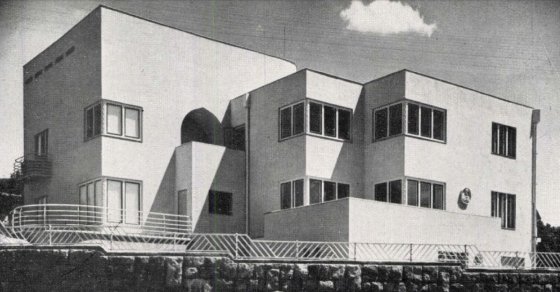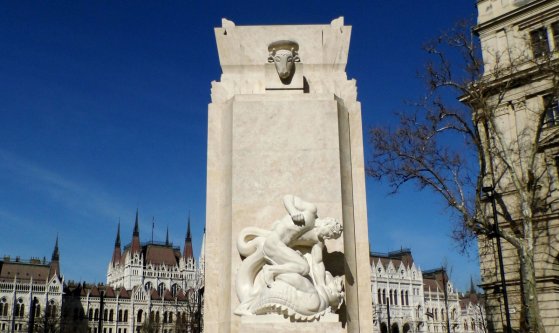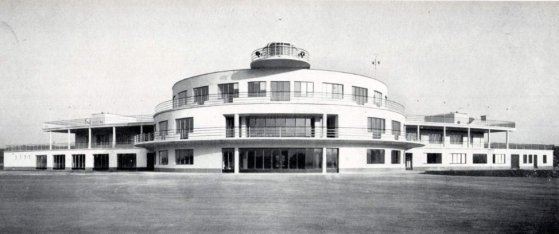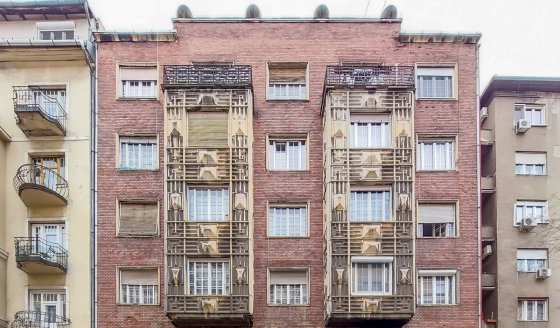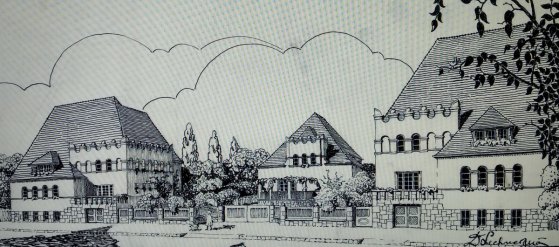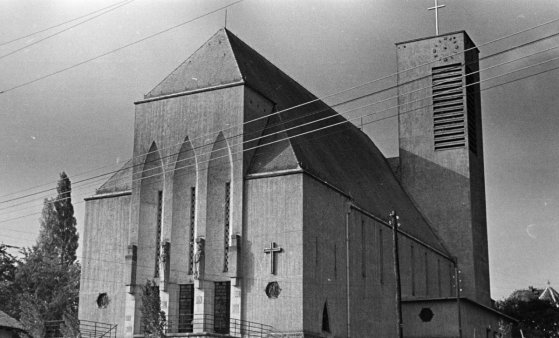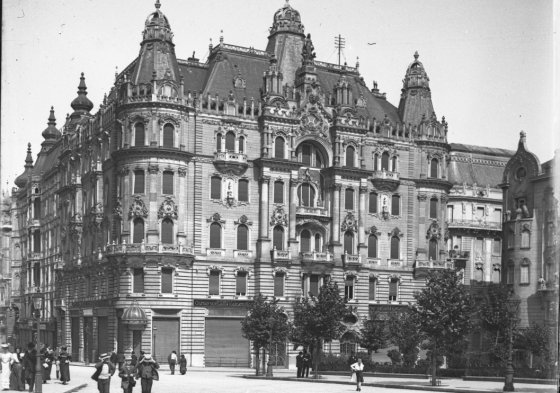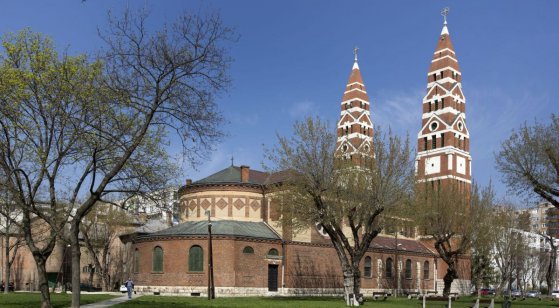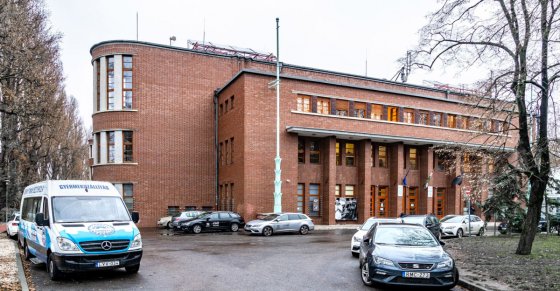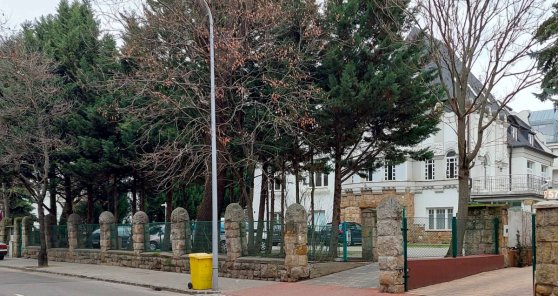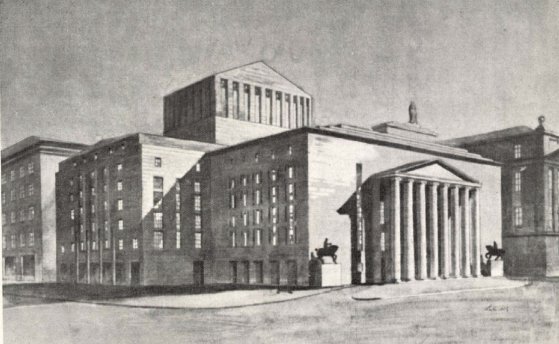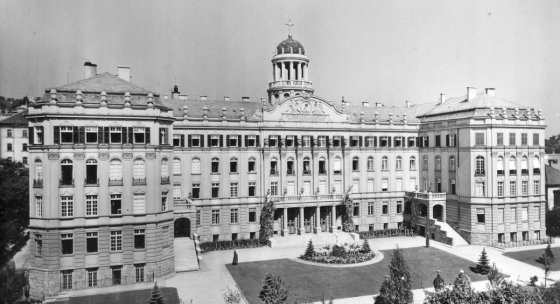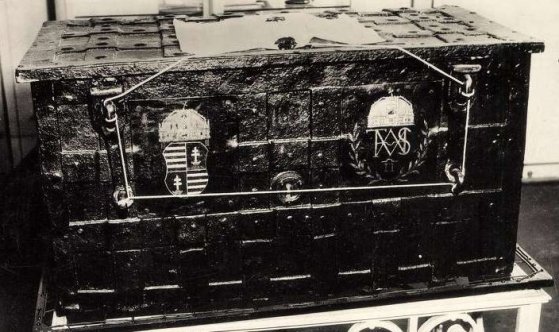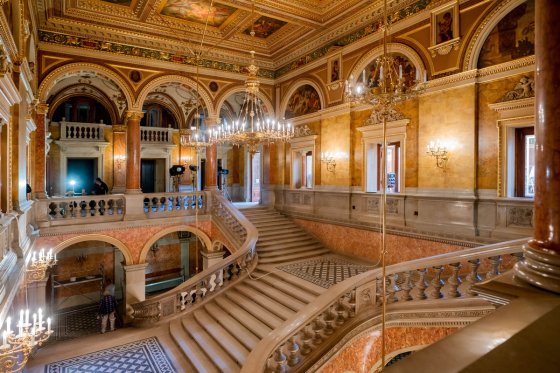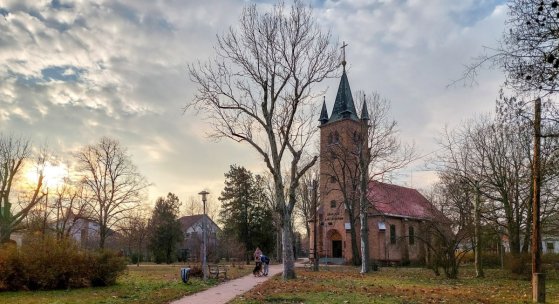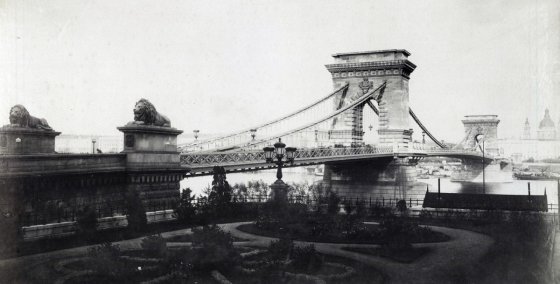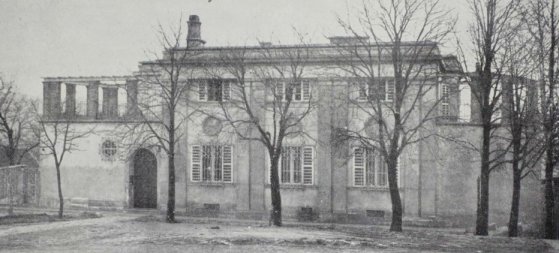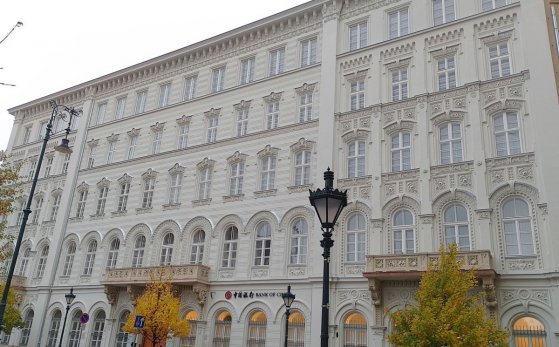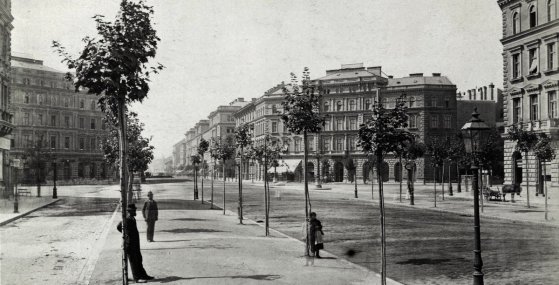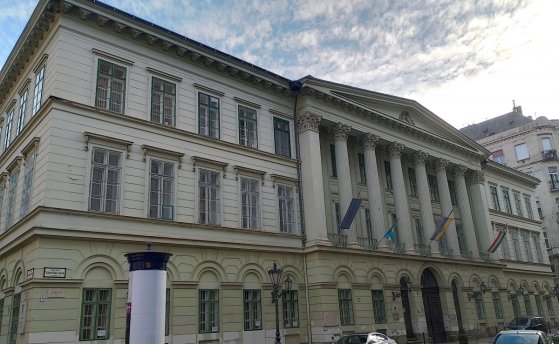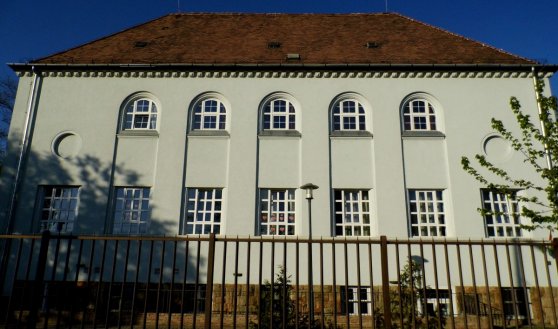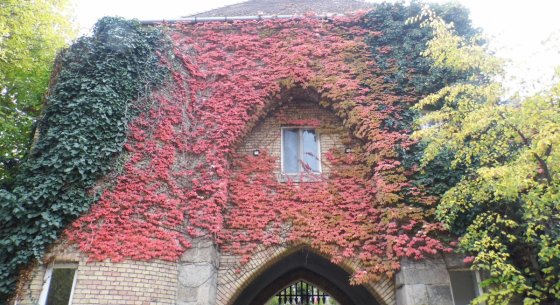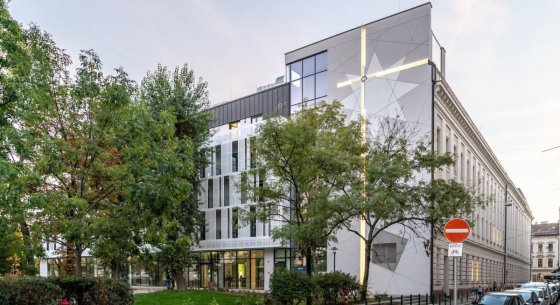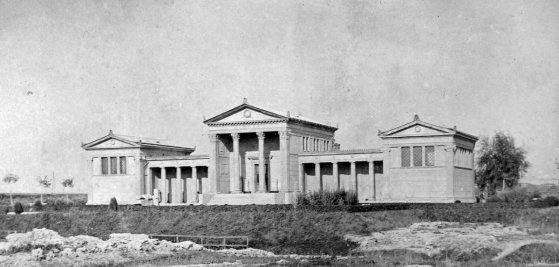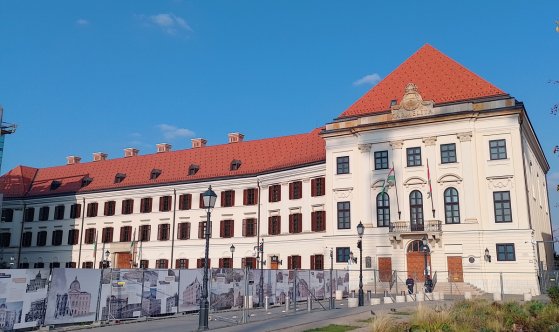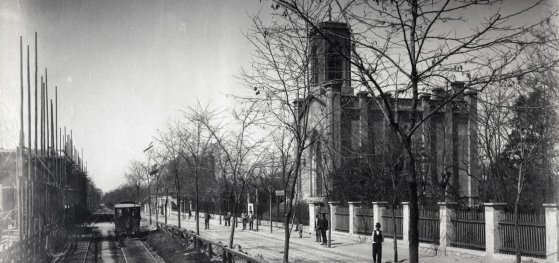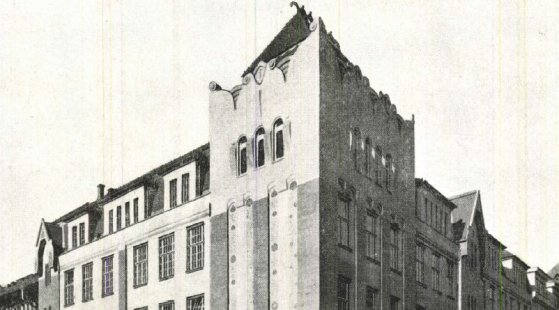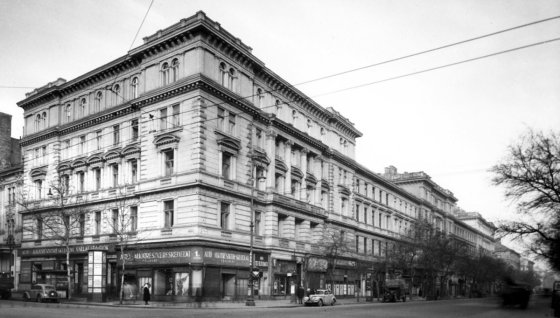 The „intertwined history” of the bridges and the city of Budapest
Which ideas and events have shaped the fate of bridges of Budapest and the cityscape? Alongside many other interesting facts, this question is also answered this newly published book by the Budapest City Archives, which introduces the history of bridges in Budapest.
The „intertwined history” of the bridges and the city of Budapest
Which ideas and events have shaped the fate of bridges of Budapest and the cityscape? Alongside many other interesting facts, this question is also answered this newly published book by the Budapest City Archives, which introduces the history of bridges in Budapest.
Péter Bodó
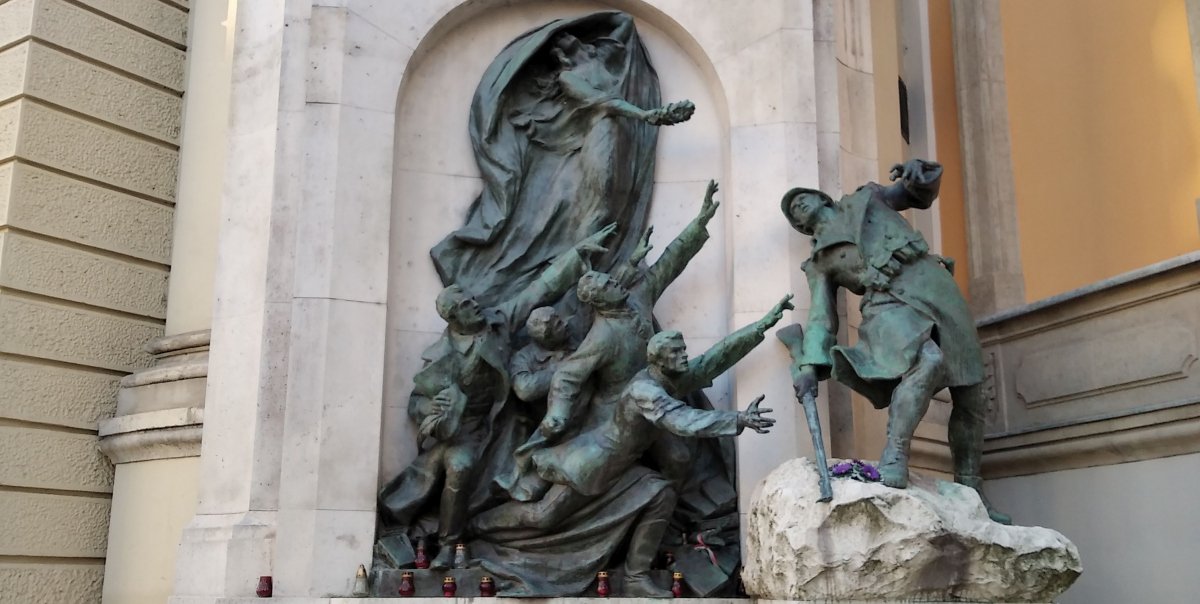 Drama on the university wall - The heroic monument was planned 95 years ago
Drama on the university wall - The heroic monument was planned 95 years ago
March 30, 2023 at 9:00 AM
In the constant hustle and bustle of the Egyetem Square in Pest, the students may not even notice the monument that decorates the short section of wall between the church and the central building of ELTE. However, it commemorates their predecessors, the heroes who fought for their country in World War I, and those who heroically helped them. The first design of the dramatically collapsing soldier was born in 1928, ninety-five years ago.
Luxury in the white cubes - 90-year-old modern villas in Buda
March 23, 2023 at 10:00 AM
The Buda side of the capital, with its wonderful landscapes and fresh air, is still very attractive today, and it was like this even in the first half of the last century. Many people from Pest, which became especially crowded after the Treaty of Trianon, moved to the other side of the Danube and from the beginning of the thirties, they built modern-style villas on the hillsides. Pestbuda now presents two of them below, into which their residents moved ninety years ago.
Stone coffin in front of the Parliament - The Monument of National Martyrs was unveiled 89 years ago
March 20, 2023 at 10:30 AM
Statues of many statesmen can be seen in front of the Parliament, which is why the Monument of National Martyrs, located next to Kossuth Square, on Vértanúk Square, receives relatively little attention. The dignified work even in its simplicity commemorates the victims of the proletarian power after World War I. After five years of preparation, it was unveiled on 18 March 1934, exactly eighty-nine years ago.
The pioneer of modern architecture - Virgil Borbíró was born 130 years ago
March 6, 2023 at 10:00 AM
In the first half of the 20th century, Hungarian architectural public life was punctuated by many debates: at first, the Hungarian design language was at the centre, then from the second half of the 1920s, modern architecture. Virgil Borbíró took on a fighting role in the latter and fought determinedly for the new trend to gain ground. The engineer, who was born exactly one hundred and thirty years ago, left his mark on Hungarian cultural history not only with his buildings but also with his writings and organisational work.
The small mirror of Art Deco - The lesser-known side of Frigyes Spiegel, who died 90 years ago
February 28, 2023 at 10:00 AM
Frigyes Spiegel wrote himself into the history of Hungarian architecture with his fantastic facades: his Art Nouveau buildings are the earliest appearances of the new style in the country. His genius naturally followed the changes of the times, and between the two world wars, he also left his mark on Art Deco - even if only to the extent of a single building. However, the historical circumstances also increase the value of this work of his, which also belongs to the elite in its category.
Where a movie star lived 100 years ago - Kálmán Rózsahegyi's villa
February 24, 2023 at 9:00 AM
Kálmán Rózsahegyi was one of the greatest actors of the first half of the last century, in addition to his stage presence, he also played in many cult films. For his fiftieth birthday, his fans wanted to surprise him with a family house, for which they started a fundraiser. The plans were drawn up by Jenő Lechner a hundred years ago, in 1923, and he created a sumptuous luxury villa with his brilliant idea and great sense of style. Three years later, the actor was able to occupy his new home after returning home from the United States of America.
Gemstone along the Devil's Trench - The idea of the emerald church was born 90 years ago
February 21, 2023 at 2:00 PM
A fantastic church is hidden among lavish villas, just a few hundred metres from the tram terminus in Hűvösvölgy. Its modern forms suggest that it was built in the 20th century, but visitors might not even imagine how long the work took - competing with medieval cathedrals, it was completed in several decades. However, the result was equally brilliant, the Gothic and modernism are perfectly combined in it. The idea of building the church in Remetekertváros was born ninety years ago, in 1933.
There was once a theatre in the Class Lottery Palace - The history of the theatre began 105 years ago on Eskü Square
February 12, 2023 at 9:00 AM
Where cars turn down today from the Erzsébet Bridge to the Pest embankment, before World War II, there stood a huge and beautiful building: the Class Lottery Palace. It was built at the turn of the century in the Neo-Baroque style, but Art Nouveau also left its mark on it. However, its interior was remodelled several times, most significantly for Vilma Medgyaszay's theatre. Jenő Lechner made its classicist plans in February 1918, exactly 105 years ago.
Ernő Foerk, who built a church in a slum, was born 155 years ago
February 3, 2023 at 9:00 AM
Ernő Foerk is not one of Hungary's famous architects, but almost everyone knows his main work, the Votive Church of Szeged. A building very similar to it can also be found in Budapest, namely in Tripolisz of the 13th District, which was one of the capital's scariest neighbourhoods. The St. Michael's Parish Church, consecrated in 1930, brought light to the part of town with a dubious reputation.
The first Hungarian Olympic champion became a famous architect - Alfréd Hajós was born 145 years ago
February 1, 2023 at 11:00 AM
Hungary is considered a great power in water sports, which was already foreshadowed by the glory of our first Olympic champion: Alfréd Hajós won Hungary's first gold in swimming. At the Athens competition, he was only eighteen years old, so he had to choose a career after his victory, and the swimmer nicknamed the Hungarian Dolphin became an architect. In the first half of the 20th century, Alfréd Hajós, who was born 145 years ago, achieved good results in this field as well, his works were of the high standard of the era.
Witnesses of an exciting era - A mix of styles on the turn of the century villas
January 27, 2023 at 9:00 AM
The term turn of the century usually refers to the end of the 1800s and the beginning of the 1900s, the last two decades of happy times of peace. This period brought amazing diversity to the field of architecture, which appeared not only in large-scale public buildings but also in smaller residential buildings and villas. An excellent example of this is provided by some early villas of a little-known architect, Jenő Lechner, several of which were taken over by their new owners in 1908, i.e., one hundred and fifteen years ago.
Gone are the boards that once meant the world - Béla Lajta and the first National Theatre
January 23, 2023 at 10:00 AM
Béla Lajta was one of the most brilliant figures in the history of Hungarian architecture, who fortunately was properly appreciated even in his own time, and posterity cherishes his memory with respect. A long series of studies and several books have already been published about his life and work, and three years ago Pestbuda also commemorated the 100th anniversary of his death. Today Hungarians celebrate the anniversary of his birth as he was born 150 years ago. On this occasion, Pestbuda now presents a topic close to his heart, his designs for the former National Theatre.
The lover of historical styles - Gáspár Fábián passed away 70 years ago
January 13, 2023 at 9:00 AM
The second half of the 19th century was the great era of the revival of historical styles, which is called historicism in technical terms. Although the different tendencies of Art Nouveau ended its dominance around the turn of the century, it remained on the stage and even experienced a second boom from the beginning of the 1920s. One of the most prolific architects of this period was Gáspár Fábián, who died 70 years ago.
Hidden in the Strong Room - This is how the Holy Crown was kept in Buda Castle
January 9, 2023 at 1:30 PM
Today, it is taken for granted that anyone can view the Holy Crown of Hungary. But for centuries it was stored in a closed chest with iron straps, protected by keys and seals, and could only be taken out on special holidays, such as the coronation in 1867, the millennium celebration in 1896 or the Eucharistic Congress in 1938. On the occasion of the return of the fearfully guarded national treasure 45 years ago, Pestbuda presents the conditions under which the crown was guarded in Buda Castle.
This is how Budapest developed in 2022 - Several public buildings were handed over this year
December 31, 2022 at 11:00 AM
2022 will almost certainly go down in history with a negative tone, as it was burdened by a series of crises from which Hungary could not extricate itself. Nevertheless, Budapest developed very nicely, many investments were completed this year: several new buildings were completed and many monuments were restored. On the last day of the year, Pestbuda looks back and summarises the events of the year.
A little Transylvania on the edge of Budapest - Lutheran churches of Rákosmente
December 24, 2022 at 3:00 PM
The tiny Rákos Stream flowing through the edge of Pest gave its name to a series of quarters in the 16th and 17th Districts, including Rákosliget, Rákoskeresztúr, Rákosszentmihály, Rákoscsaba and Rákoshegy. There is also a great similarity in their built environment, they show a rural, small-town image. Moreover, they also share a high degree of similarity between their evangelical churches: they are reminiscent of Transylvanian fortified churches.
Merger of Buda, Pest, Óbuda and Margit Island: 150 years ago the city unification law was announced
December 22, 2022 at 12:30 PM
Budapest is one of the most beautifully situated capitals in the world, something Hungarians can be really proud of. It is always nice when a foreigner marvels spectacularly, for example, at the panorama from the Castle. But Hungarians owe these ecstatic expressions not only to the gift of nature but also to the built environment created by our ancestors. Buda and Pest have lived in each other's neighbourhood for centuries, yet their unification provided the impetus that later resulted in so many fantastic buildings on both banks of the Danube. At the end of 1872, after a long history, the parliament passed a law on the merger of the cities, which was approved by the monarch on 22 December 1872 and was announced the next day.
Scandalous background, sensational ending - The Lukács Villa on Ostrom Street is 100 years old
December 16, 2022 at 8:30 AM
The steep Ostrom Street, which opens into the Bécsi Kapu Square, is home to several valuable buildings, which are worthy of the prominent location with their sophisticated appearance. However, the history of the creation of the former Lukács Villa at number 5 is riddled with scandals, but this can also be attributed to the turbulent era. The walls of the villa, which was completed 100 years ago, hide this flaw, and to today's observer, they only tell about the designer's genius.
The capital launched a housing construction program during a crisis in the 1920s
December 7, 2022 at 11:00 AM
During the period of dualism in Budapest, most residential buildings were built by private investors, as there was a huge demand for them at that time: large crowds moved to the capital. The trend continued even after World War I, but at that time the economic environment was not nearly as favourable, so the capital itself launched a small flat construction program. Several buildings were completed by November-December 1926, the first residents moved in ninety-six years ago.
Master of Romanticism Hugó Máltás passed away 100 years ago
November 27, 2022 at 10:00 AM
Hugó Máltás is one of our lesser-known architects, even though he had an extremely long career and life: he died at the age of ninety-four, in 1922. The fact that his name did not enter the public consciousness can be attributed to his much more busy contemporaries, primarily Miklós Ybl. However, Máltás also designed quite a lot, especially during the period of Romanticism. A summary of his works is presented below.
Lajos Lechner, the creator of modern Budapest, died 125 years ago
November 18, 2022 at 9:00 AM
Lechner is a well-known name in the world of architecture and engineering: the former is mainly due to Ödön Lechner, and the latter to Lajos Lechner. Despite the same family name, they were not related, and their artistic and technical talent developed independently of each other. Lajos, who died 125 years ago, moved on a completely different path than Ödön, who was a good decade younger than him. Take a look at a summary of what Hungary and especially Budapest, owes to him.
Whose masterpieces were demolished: Mátyás Zitterbarth Jr. died 155 years ago
November 14, 2022 at 9:00 AM
The development of a large city is always accompanied by the demolition of buildings, as old ones are replaced by new ones that already meet modern needs. Mátyás Zitterbarth Jr., who created in the first half of the 19th century, largely fell victim to this phenomenon. However, he was a brilliant architect, which is proven by the fact that the mayors of the city of Pest entrusted him with the design of important public buildings. Pestbuda now presents his demolished and still-standing works.
Nuns and communists also used the present headquarters of the Institute for the Blind
November 11, 2022 at 10:00 AM
Hermina Road, which marks the eastern border of City Park, is primarily known for its churches: the Hermine Chapel, which also gives its name, and the Church of the Immaculate Conception on the corner of Ajtósi Dürer Way. However, between the two hides a lower, yet dignified-looking building, which was originally built by the Franciscan Missionaries of Mary and handed over ninety-five years ago.
Art Nouveau on tombstones - An attempt to renew cemetery art
November 2, 2022 at 10:00 AM
Around the Day of the Dead, many of us visit the graves of our loved ones, and at this time we can discover that the cemetery is also a repository of real works of art. At the beginning of the 20th century, Art Nouveau, which broke with classical forms, permeated this area as well, and artists tried to offer new solutions to those who ordered tombstones. One of the most enthusiastic of them was the sculptor Richárd Füredi, who together with two of his colleagues organised an exhibition to introduce his works reflecting the new taste to the general public.
Light permeates the reborn Ráday House
October 28, 2022 at 9:00 AM
Large-scale construction had been going on in Ráday Street, and especially Markusovszky Square, in recent years, the veil has recently been lifted: the new building of the Ráday Dormitory, which burned down in early 2019, has been completed. The works also included the renovation of the original centre, so an entire block of buildings was reborn in the heart of Ferencváros. Old and new blend together harmoniously, perfectly expressing the Christian values prevailing between the walls.
They collected memories of old times - Budapest founded a museum 135 years ago
October 20, 2022 at 3:00 PM
Budapest's position as the capital provides many advantages but sometimes it also comes with disadvantages. This was also the case in the area of museums: because the Hungarian National Museum was established here in 1807, the capital was able to establish its own institution only eighty years later - after many rural settlements. However, on 20 October 1887 - exactly 135 years ago - the decision was finally made and the Capital Museum was established.
The church and monastery were turned into a place of entertainment - the Castle Theatre opened 235 years ago
October 16, 2022 at 9:00 AM
One of the characteristic buildings of the Buda Castle is the Carmelite monastery, which has been used by the Prime Minister's Office for almost four years. The eponymous order of monks was actually forced to withdraw from the walls a long time ago, precisely 235 years ago, their church was turned into Castle Theatre. The ruthless intervention also greatly affected the building itself, but it was mostly then that the image that is known today was formed.
A romantic jewellery box in Zugló - The construction of the Hermine Chapel began 180 years ago
October 10, 2022 at 5:00 PM
One of the typical buildings on Hermina Road, which marks the eastern border of City Park, is the small Hermina Chapel. Despite its size, it has a very decisive role, as not only the road was named after it, but also the district where it stands: Herminamező. In keeping with its style, its story is also romantic, containing both beauty and tragedy. The foundation stone of the small chapel was laid just one hundred and eighty years ago.
110-year-old neighbours - The twins of the big school building campaign
October 3, 2022 at 2:00 PM
Fortunately, there are many architecturally valuable school buildings in Budapest. A significant part of them was created in a very short period, in just three years: the Capital implemented a large school building program between 1909 and 1912. Many well-known alma maters were born at this time, but Pestbuda now presents two less famous examples of this fertile era.
Even the economic crisis could not stop construction – The first Neo-Renaissance houses on Andrássy Avenue
September 29, 2022 at 11:00 AM
Similar to the last few crisis-filled years, there were also economic difficulties in the past centuries, which also had an impact on the construction industry. Such was the crisis of 1873, which very sensitively affected the mega-investment of the era, the constructions along Andrássy Avenue. Fortunately, construction began here as early as 1872 - i.e., 150 years ago - and some residential houses were soon completed, setting a good example for further construction.
More articles
 The „intertwined history” of the bridges and the city of Budapest
Which ideas and events have shaped the fate of bridges of Budapest and the cityscape? Alongside many other interesting facts, this question is also answered this newly published book by the Budapest City Archives, which introduces the history of bridges in Budapest.
The „intertwined history” of the bridges and the city of Budapest
Which ideas and events have shaped the fate of bridges of Budapest and the cityscape? Alongside many other interesting facts, this question is also answered this newly published book by the Budapest City Archives, which introduces the history of bridges in Budapest.
 The Bridge Report, which brought a turning point in the history of Budapest
A travel report that changed the history of Pest and Buda, as well as Hungary. The little book contributed to the change of half a thousand years of legal customs and the implementation of an investment of unprecedented size and technical quality. This book was The Bridge Report [Hídjelentés in Hungarian].
The Bridge Report, which brought a turning point in the history of Budapest
A travel report that changed the history of Pest and Buda, as well as Hungary. The little book contributed to the change of half a thousand years of legal customs and the implementation of an investment of unprecedented size and technical quality. This book was The Bridge Report [Hídjelentés in Hungarian].
 A message from the former school: An exhibition in memory of János Neumann was opened at the Fasori Secondary School
An exhibition was opened in János Neumann's former school, the Fasori Lutheran Secondary School, on the occasion of the 120th anniversary of the world-famous mathematician's birth. In the exhibition presenting the former Neumann milieu, paintings, graphics, photos, furniture, and objects tell the story of the art-supporting spirit of the noble bourgeois family at the turn of the century.
A message from the former school: An exhibition in memory of János Neumann was opened at the Fasori Secondary School
An exhibition was opened in János Neumann's former school, the Fasori Lutheran Secondary School, on the occasion of the 120th anniversary of the world-famous mathematician's birth. In the exhibition presenting the former Neumann milieu, paintings, graphics, photos, furniture, and objects tell the story of the art-supporting spirit of the noble bourgeois family at the turn of the century.

